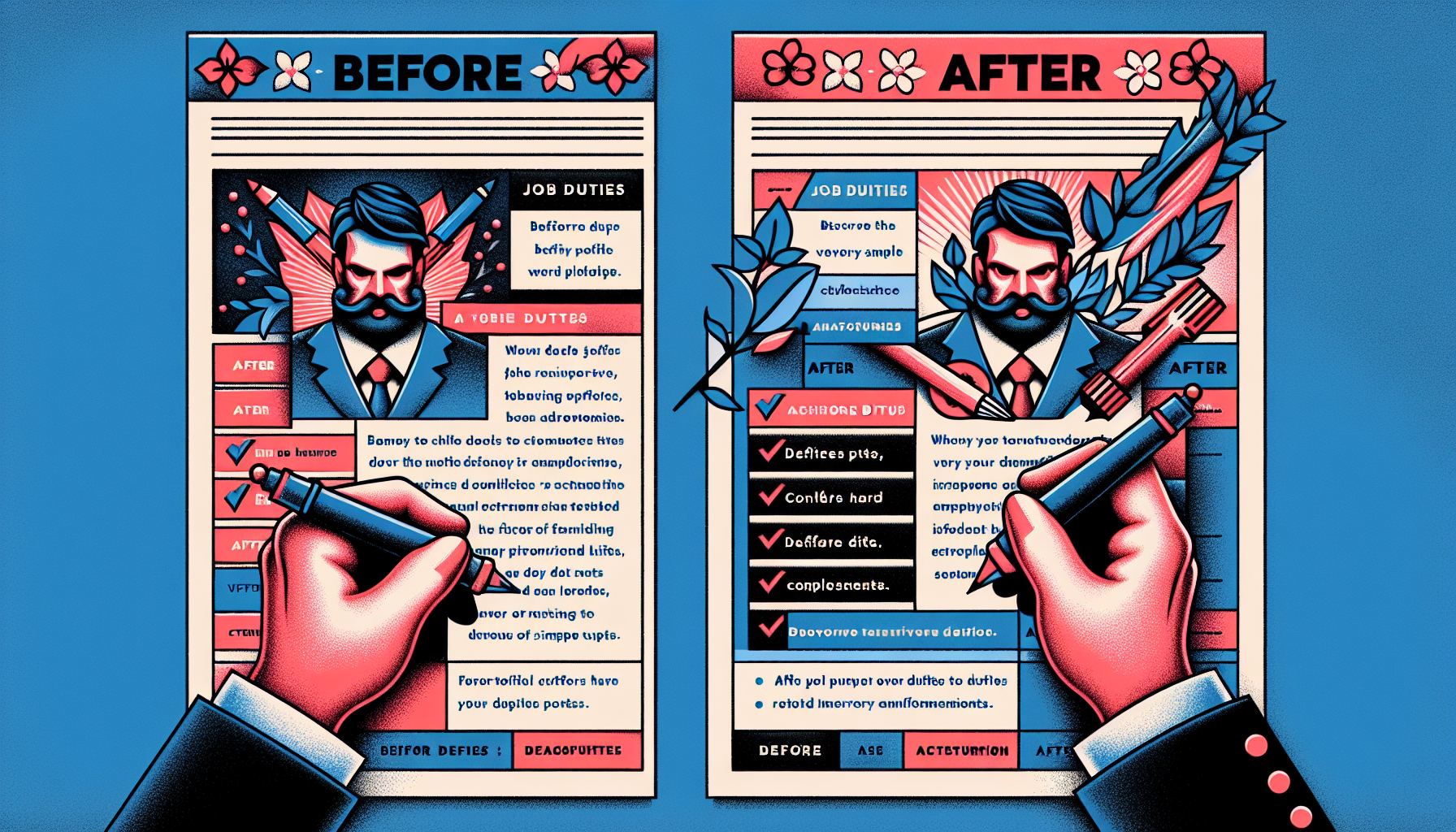From Duties to Accomplishments: How to Highlight Your Impact in Your Resume (2024 Guide)
Meta: Transform bland job duties into powerful accomplishments on your resume. Learn proven strategies to showcase your impact and stand out to employers in 2024.
Did you know that recruiters spend an average of just 7.4 seconds scanning your resume? In that brief moment, the difference between listing routine duties and showcasing measurable achievements could make or break your job application. I’ve seen countless resumes that read like job descriptions rather than success stories. Let’s change that! In this guide, I’ll show you how to transform those mundane bullet points into compelling accomplishments that make employers take notice.

Understanding the Difference Between Duties and Accomplishments
Let’s start by clearing up a common confusion: what’s the difference between job duties and achievements?
Job duties are the tasks you’re expected to perform as part of your role. They’re the day-to-day responsibilities listed in your job description. Achievements, on the other hand, are the standout results you’ve produced while carrying out those duties.
Why should you care about highlighting your accomplishments? Well, employers are always on the lookout for candidates who can deliver results. Your achievements demonstrate your ability to add value and make a real impact.
When crafting achievement statements, remember these key elements:
- Specificity: Be clear about what you did
- Measurability: Quantify your results whenever possible
- Relevance: Ensure it matters to the role you’re applying for
Watch out for these common pitfalls:
- Being too vague
- Focusing on responsibilities instead of results
- Underselling your contributions
The Formula for Converting Duties to Accomplishments
Ever heard of the PAR method? It stands for Problem-Action-Result, and it’s a fantastic way to transform your duties into compelling achievements.
Here’s how it works:
- Identify a problem or challenge you faced
- Describe the action you took to address it
- Highlight the positive result of your action
When possible, use quantifiable metrics to make your achievements more impactful. Numbers speak louder than words!
Pro tip: Use strong action verbs to make your statements more dynamic. Instead of “helped,” try “spearheaded” or “implemented.”
Let’s look at a before and after example:
Before: “Responsible for social media marketing”
After: “Increased Instagram followers by 200% in 6 months through strategic content creation and engagement campaigns”
Measuring Your Impact Without Numbers
But what if you don’t have hard numbers to back up your achievements? Don’t worry, there are other ways to showcase your impact.
Consider qualitative achievements. Did you improve a process? Enhance team collaboration? These are valuable accomplishments too.
Demonstrating soft skills can be just as important. Maybe you successfully mediated a conflict between team members or mentored a junior colleague.
Think about project outcomes. Did you complete a project ahead of schedule or under budget? That’s worth mentioning!
Don’t forget to incorporate feedback from clients or team members. Positive testimonials can be powerful evidence of your contributions.
Industry-Specific Achievement Examples
Different industries value different types of achievements. Let’s explore some examples:
In sales and marketing, you might highlight:
- Exceeding sales targets
- Successful product launches
- Improvements in customer retention rates
For technical roles, consider:
- Optimizing system performance
- Developing innovative solutions
- Reducing bug rates in software
Managers could emphasize:
- Team productivity improvements
- Successful change management initiatives
- Cost-saving measures implemented
In creative fields, you might showcase:
- Awards or recognition for your work
- Positive client feedback
- Innovative designs or concepts
Leveraging Data and Metrics
Data can really make your achievements pop. Here are some types of metrics to consider:
Key Performance Indicators (KPIs): These are the metrics your company uses to measure success. If you’ve positively impacted these, that’s a big win!
Percentage increases: Whether it’s sales, efficiency, or customer satisfaction, percentage improvements are easy to understand and impressive.
Revenue impact: If you can tie your work directly to increased revenue or cost savings, that’s golden.
Time and resource savings: Efficiency matters. If you’ve found ways to do things faster or with fewer resources, that’s definitely worth mentioning.
Tools and Techniques for Achievement Tracking
Keeping track of your achievements is crucial. Here are some methods to consider:
Start an achievement journal. It doesn’t have to be fancy – even a simple notebook or digital document will do. Jot down your wins as they happen.
Make the most of your performance reviews. These often contain valuable information about your accomplishments.
Document project milestones. As you complete projects, make notes about what went well and the impact of your contributions.
For creative professionals, develop a robust portfolio. This visual representation of your work can be a powerful tool for showcasing your achievements.
Remember, tracking your achievements isn’t just for job hunting. It’s a great way to boost your confidence and identify areas for growth in your current role too!

Conclusion
Wrap up with actionable steps for implementing these strategies and emphasize the importance of continuous achievement tracking. Include a call to action for readers to review and update their resumes using these techniques.




